Detailed Information
Advanced UV for Life
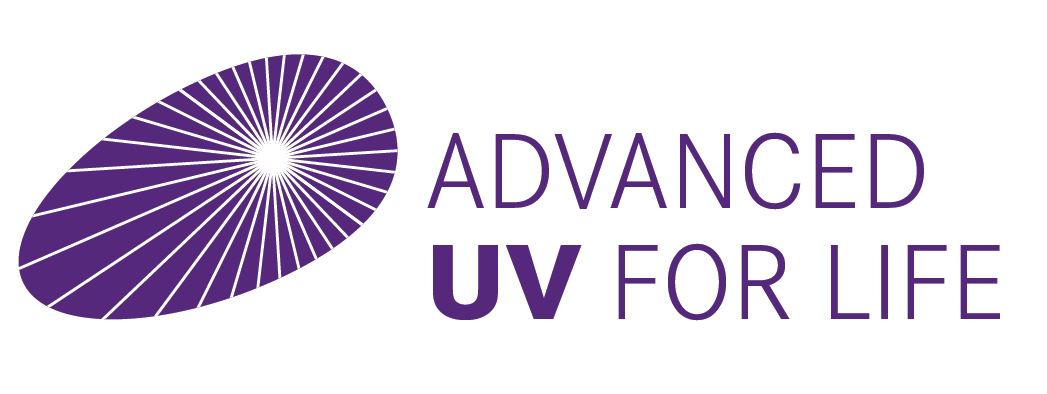

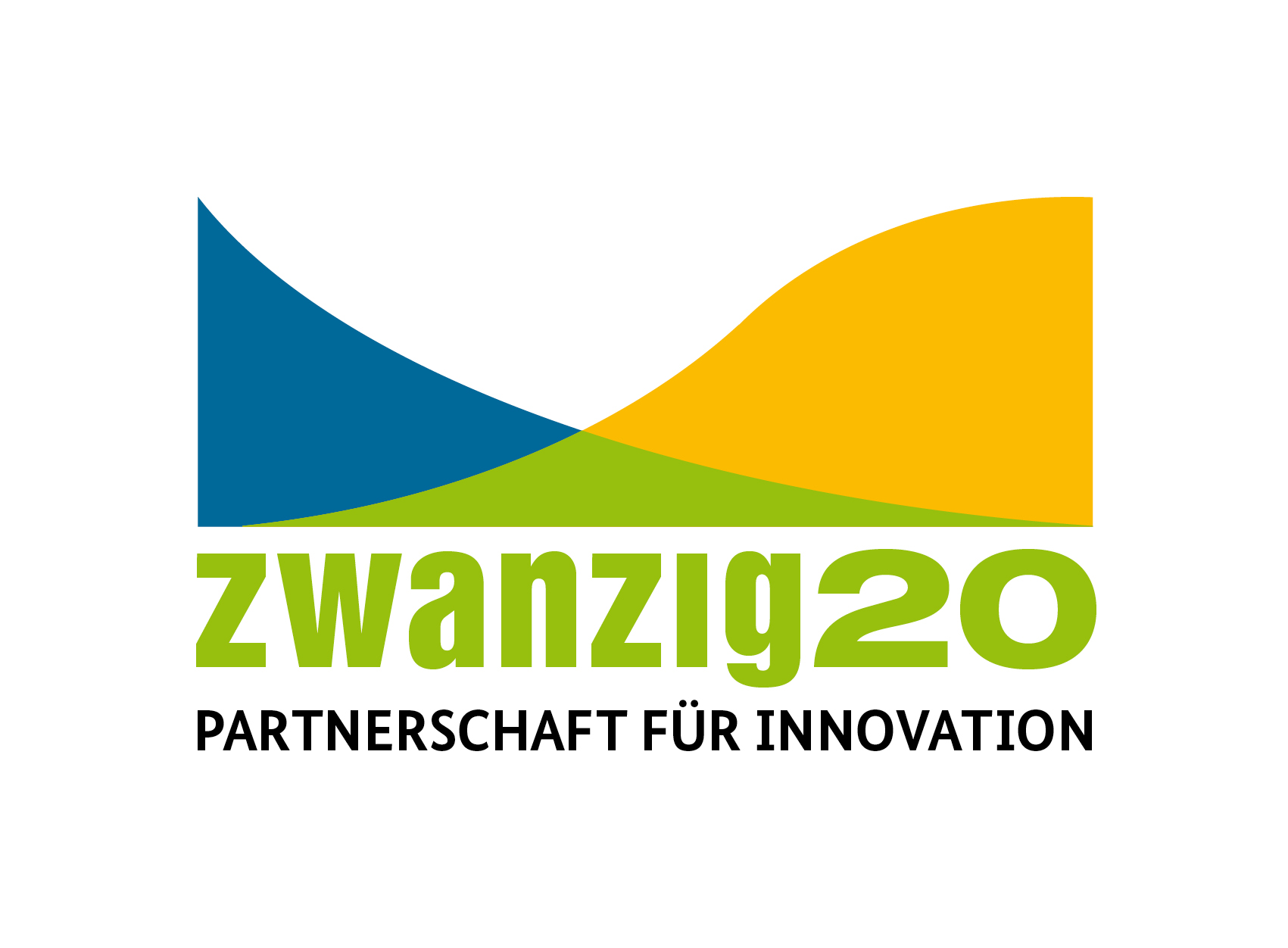

This challenge is initiated by the consortium “Advanced UV for Life”, that has been founded in 2012 and presently comprises more than 30 partners from industry and scientific institutions. The consortium aims to develop and apply UV-LEDs with specific properties.
The consortium is funded by the German Federal Ministry of Education and Research within the program “Twenty20 – Partnerschaft für Innovation”.
Ultraviolet Radiation
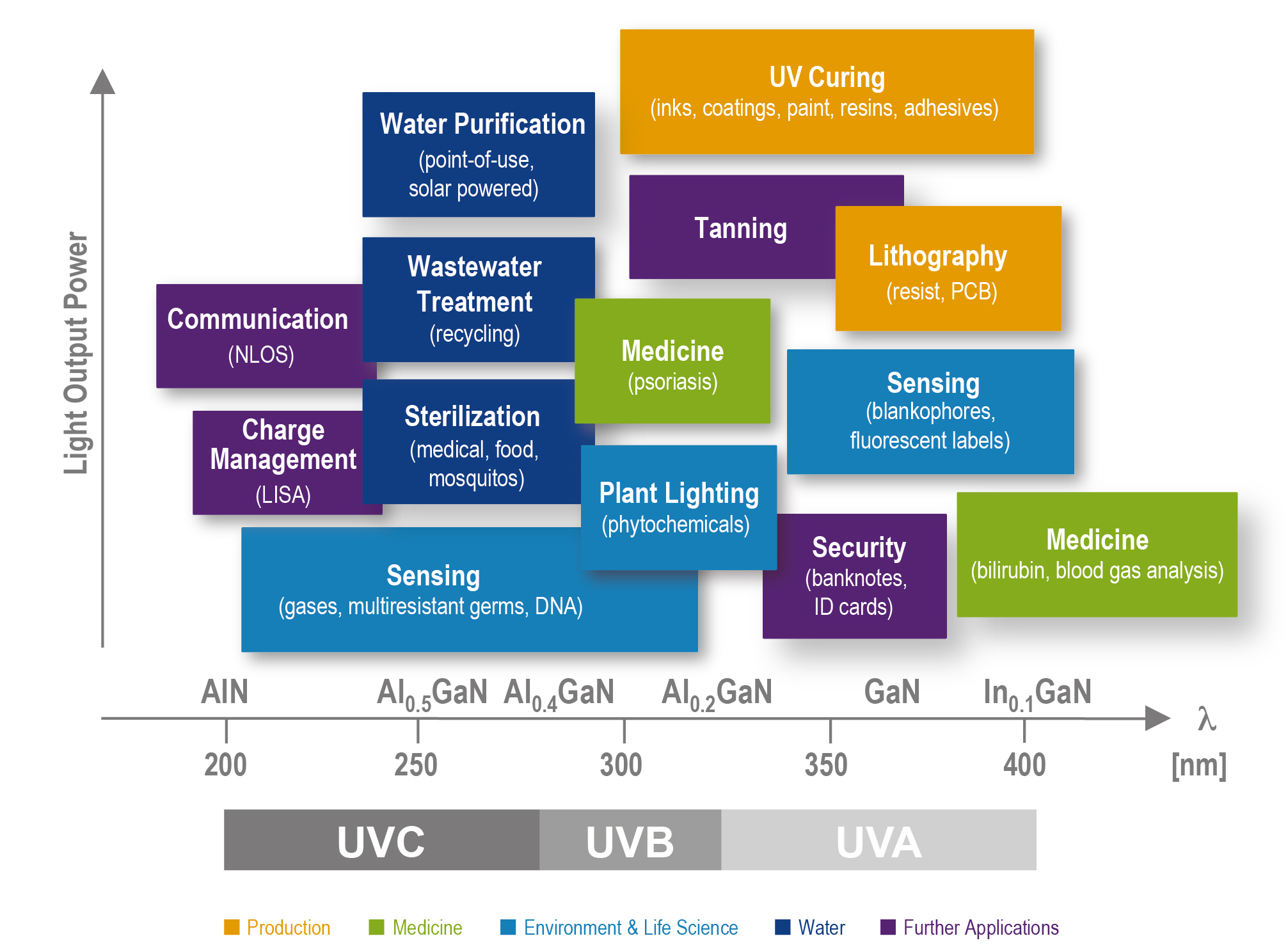
© Advanced UV for Life
Optimizing Plant Growth
UV radiations can also be used in the domain of plant growth. They activate a plant’s natural defense mechanisms, producing a sort of “sun screen” to protect the plant from the damaging light. Some plants can produce as much as 15 different defense proteins with exposure to UV. As the amount of UV increases, so does the production of defense proteins. The presence of these proteins can enhance a plant’s smell, color, taste and resistance to disease. Plants grown indoors without exposure to UV can lack these enhanced benefits.
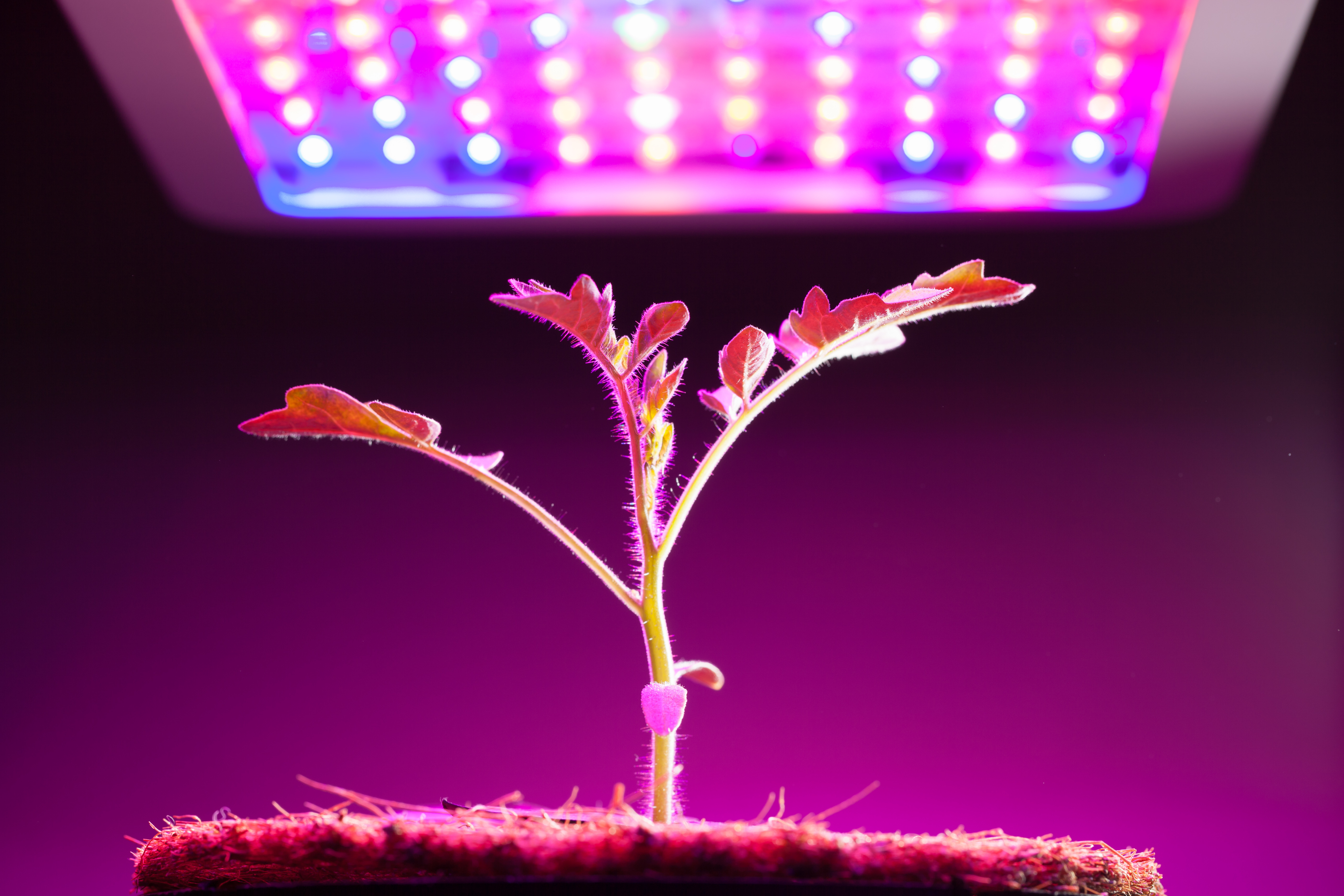
Sensing / Detecting / Curing
Besides that, UV radiation can also be used for the analysis of solids, liquids and gases. Narrowband UV emitters are well suited for the selective quantitative determination of specific ingredients, such as polluting gases in the atmosphere or nitrogen oxides and sulfur dioxide.
Different application areas have specific requirements for UV components and UV systems, since not only the wavelength of the radiation is crucial, but also, depending on the application, a certain minimum irradiation must be achieved in order to be fully effective. Furthermore, certain areas often have to be homogeneously illuminated (e.g. UV-curing, water purification). In contrast, applications in sensing and detecting require short wavelength UV-rays and wavelength-sensitive detectors.
Fluorescence
UV irradiation can also cause fluorescence. This is often used for the identification of certain substances, pathogenic germs, drugs or other hazardous materials. You might have seen policemen on famous police TV-shows shine a UV flashlight to reveal traces of blood for example.
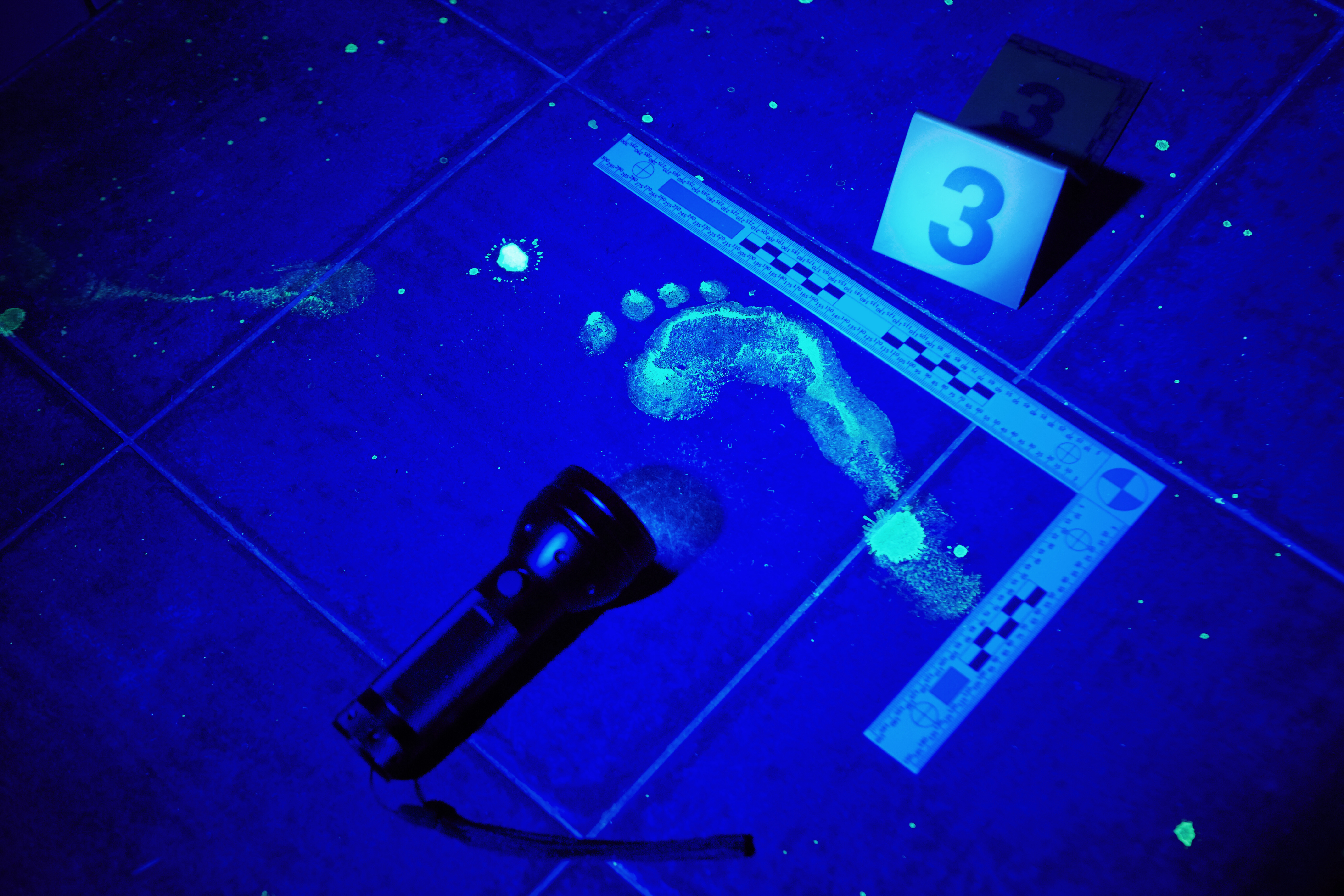
Medicine
In the interaction with biological tissue, UV radiation, depending on the dose and the wavelength, can lead to both beneficial as well as adverse effects. Wavelength and intensity of UV radiation sources can be optimized for any application in question (e.g. in the phototherapy), so that harmful side effects are ruled out or in comparison to currently available UV-sources significantly reduced. This opens up the field of medicine to diverse applications in the fields of diagnosis, therapy monitoring and patient monitoring.
Disinfection
UV irradiation does not affect smell, taste, color or pH of the irradiated material and leaves no material additions. Thus, the use of UV irradiation is particularly attractive for the purification of drinking water, producing sterile food, the provision of clean air as well as in the field of hygiene (e.g. in hospitals).
With the right exposure to UV radiation, the use of chemicals is no longer required to disinfect.
UV LED Technology
Currently, in most use cases for UV light, mercury vapor lamps are used. But with the new UV LED technology, several advantages can be noted over mercury vapor lamps.
Advantages of UV LEDs over mercury vapor lamps:
-
Compact and portable
-
Resistant to vibration and impact
-
Operating at low DC voltages
-
No thermal radiation
-
Long-living and maintenance-free
-
Customizable shapes
-
No warm-up time
-
Simple and fast regulation of intensity
-
Free of toxic components such as mercury
-
Narrow-band emission without side peaks
-
High switching frequency possible
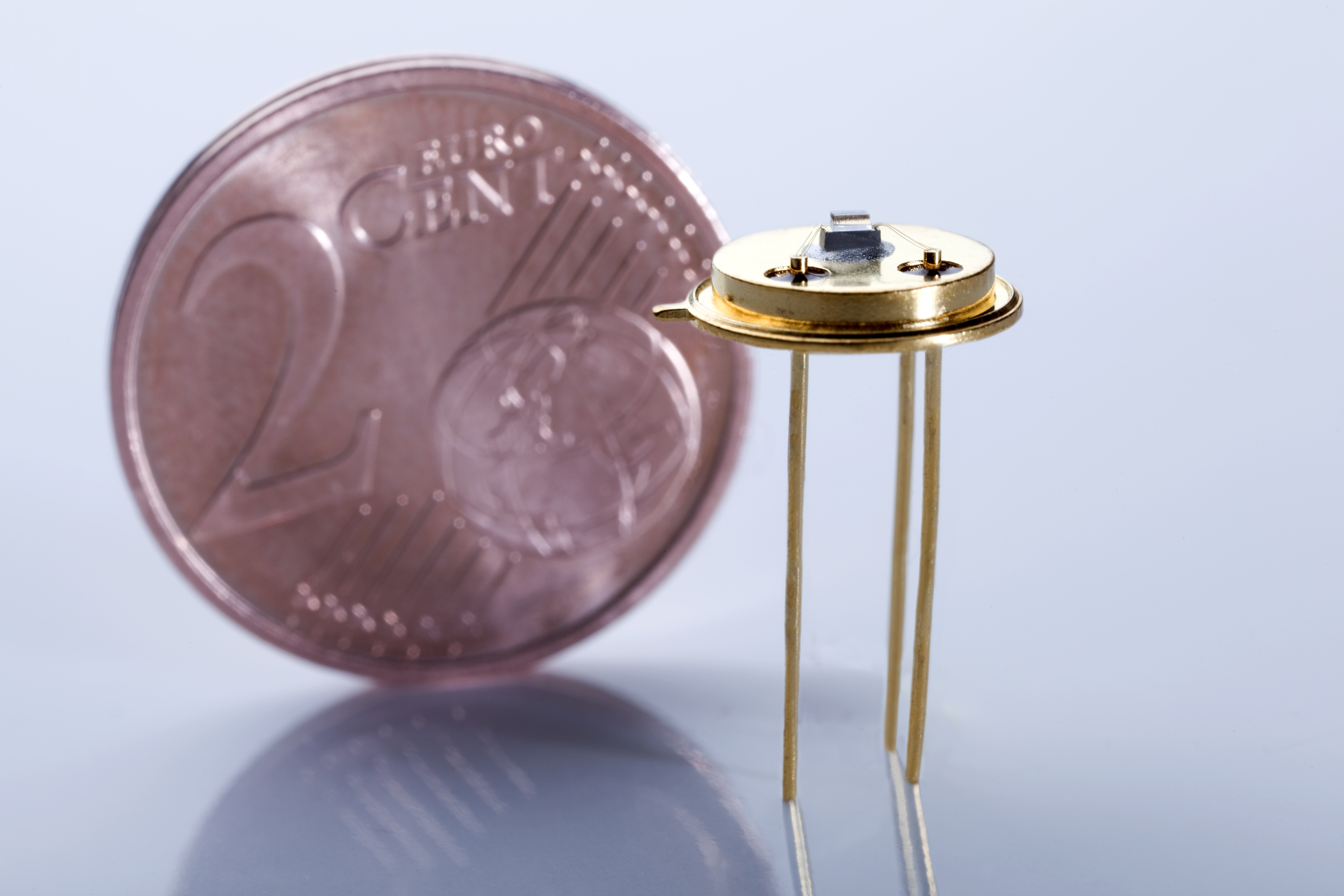
Assembled UV LED developed by FBH ©FBH/schurian.com
Dangers of UV Light
The health effects of exposure to UV light are familiar to anyone who has had a sunburn. This is because UV light transfers significantly more energy than visible light. Therefore, UV light cannot be used in the same conditions and a lot of precautions must be taken when operating it.
Short-term effects include redness or ulceration of the skin. At high intensity exposure, these burns can be serious. For chronic exposures, there is also a cumulative risk. This means that every time you expose yourself to a high dose of UVs, the damage adds up over time. The long-term risk for cumulative exposure includes premature aging of the skin and even skin cancer.
The eyes are also susceptible to UV damage. Like the skin, the protective layer of the eye (or the cornea) can be damaged from UV exposure. The danger to the eye is enhanced by the fact that light can enter from all angles around the eye and not only from the direction you are looking at.
So keep these important factors in mind when thinking of your idea!